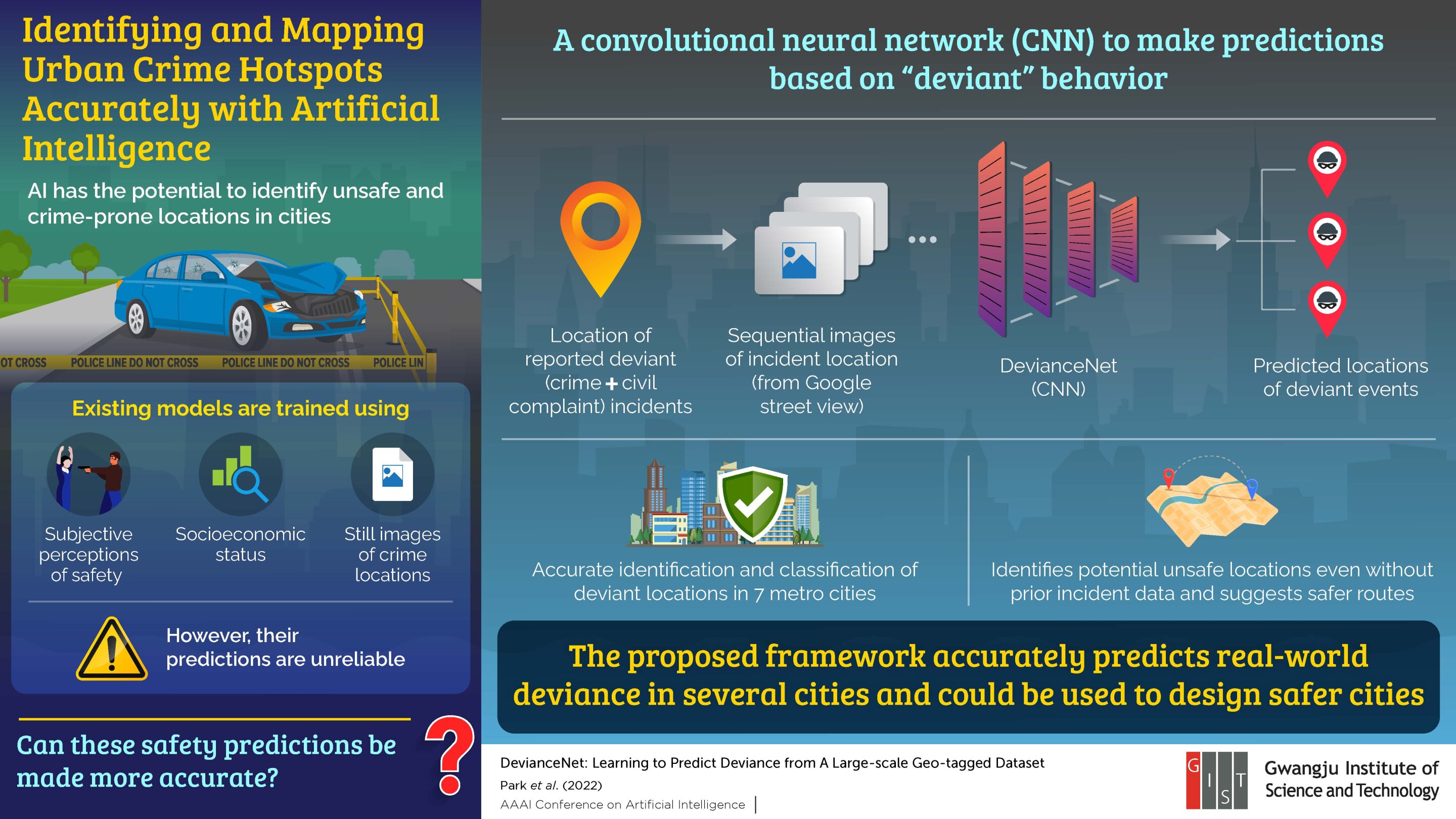Determining possible hotspots of criminal offense in a city is an crucial concern for urban security progress and can enable the authorities acquire necessary steps to make the city safer for its inhabitants. The performance of these types of preventive measures depends on the accuracy of the predictions, which are more and more getting designed by synthetic intelligence (AI)-based mostly models. Most current versions use subjective perceptions of secure destinations, socioeconomic status, and continue to photos of crime scenes, and only a several violent crimes are categorized as input details. As a final result, there is generally a discrepancy among their predictions and fact.
In a new review posted in AAAI Conference on Artificial Intelligence, researchers from the Gwangju Institute of Science and Technologies (GIST) in South Korea proposed a diverse tactic centered on a significant-scale dataset and the thought of “deviance,” which involved not only violent crimes but also civil issues regarding behaviors violating social norms, which is also called “deviant conduct.”
Appropriately, they developed a convolutional neural community product, aptly referred to as “DevianceNet,” and experienced it working with a geotagged dataset of deviant incident reports with corresponding sequential illustrations or photos of the incident places obtained applying Google avenue watch. “Our perform is the first review that investigates the connection among the physical appearance of a city and deviance with deep studying methods,” comments Associate Professor Hae-Gon Jeon, who headed the review.
The researchers collected the images from 10 GPS coordinates within just a radius of 50 m from the internet site of documented incidents, and, for each GPS locale, viewed as images with 12 directions for a full of 120 photographs. Utilizing information from 5 key towns in South Korea and two in the United states, they properly trained and analyzed their design with 2250 deviant locations and 760,952 photographs. These a massive dataset improved the prediction abilities of the model to detect doable deviant spots. “This improved visual perception duties this kind of as recognition, classification, and localization,” describes Dr. Jeon. “The holistic representation of DevianceNet extracted from complete impression sequences makes it doable to properly classify and detect deviant sites.”
Considering that the product can identify deviant actions from the visual attributes of the atmosphere, it is not town-particular and can be employed to establish possible unsafe spots even when prison incident data is not readily available. “This helps make it a valuable device in nations around the world that have bad document holding. The product can also be integrated into navigational services to recommend safer routes,” suggests Dr. Jeon, talking on the sensible implications of the examine. “Additionally, city planners can use the outcomes of the prediction to understand how the city’s structure or design setting can be redesigned to decreased situations of deviant behavior and prison action.”
Can device-discovering designs prevail over biased datasets?
DevianceNet: Understanding to Predict Deviance from A Large-scale Geo-tagged Dataset, AAAI Convention on Synthetic Intelligence: aaai-2022.virtualchair.internet/poster_aisi253
Offered by
Gwangju Institute of Science and Technological know-how
Quotation:
Scientists use artificial intelligence to establish potential unsafe areas in metropolitan areas (2022, February 23)
retrieved 31 March 2022
from https://techxplore.com/information/2022-02-synthetic-intelligence-likely-unsafe-cities.html
This doc is subject to copyright. Aside from any good dealing for the function of private study or investigate, no
component could be reproduced with out the created authorization. The content material is provided for information functions only.





